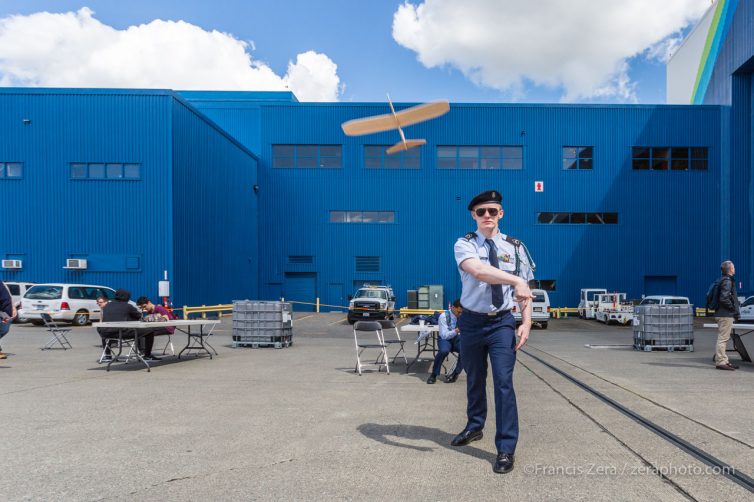
ROTC cadet launching a balsa-wood airplane
Roughly 1,200 high school and college students from across Washington state descended on Alaska Airlines’ maintenance facilities at Seattle-Tacoma International Airport recently to get a behind-the-scenes look at the aviation industry. More than 350 Alaska Airlines employees volunteered their time and expertise for the day.
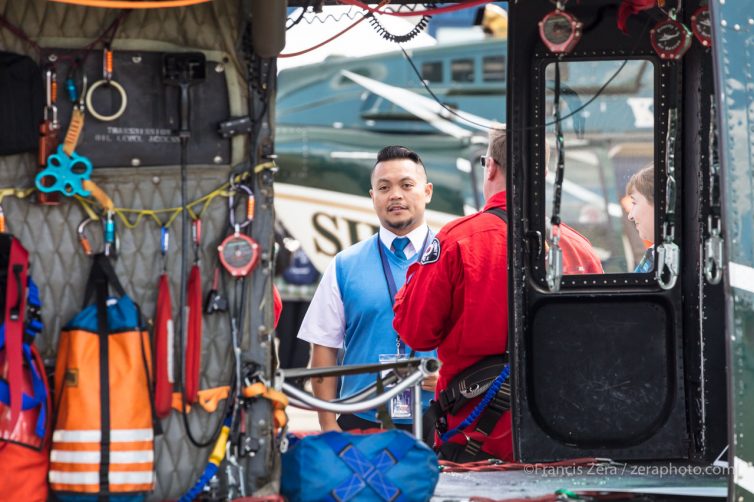
An attendee checks out King County’s search & rescue UH-1H helicopter
The Navy brought an EA-18G Growler over from Naval Air Station Whidbey, local, state, and federal law enforcement agencies brought vehicles and staff to answer questions about careers, and more than a dozen general aviation aircraft filled a hangar for students to see, and some were available for them to learn how to pre-flight, including a Piper J-3 Cub and a Cessna Caravan.
A variant of the Queen of the Skies took a step closer towards the history books this week as Kalitta Air retired its remaining 747-200, which is one of the few remaining airworthy civilian models of the type.
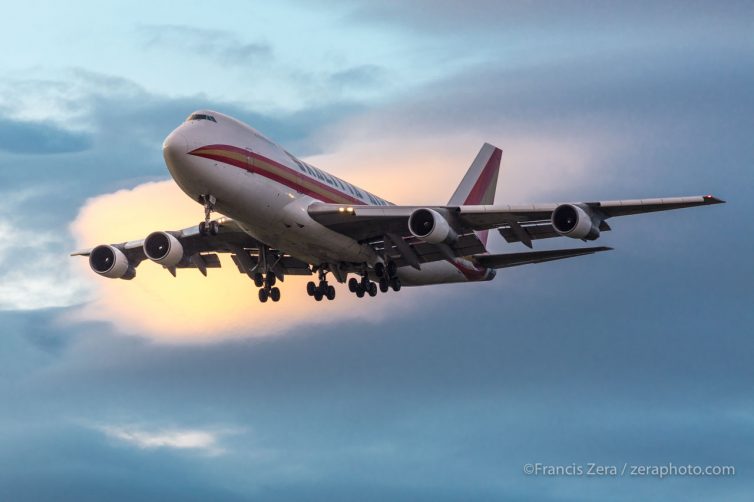
N793CK, A Kalitta Air 747-200 freighter, prepares to land at Seattle-Tacoma International Airport on its next-to-last flight before being placed into storage
This particular airframe was delivered to United Airlines in March 1987, having been built at Boeing’s Everett, Wash., factory. It was converted to a freighter in 2000 by Boeing while registered to Northwest Airlines, and was eventually put into storage in 2009. In 2010, it returned to service with Kalitta, and was officially retired on April 23.
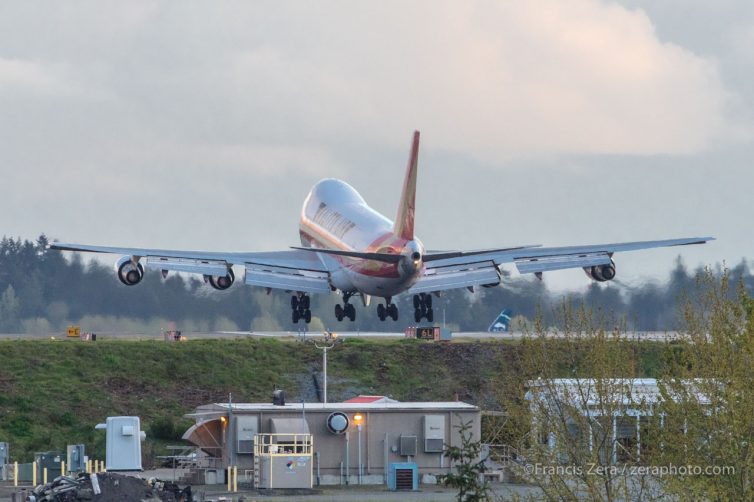
Seconds before touchdown at SEA
“It’s nice to see that people still care about this stuff,” said Capt. Scott Jakl as he and his flight crew were preparing the aircraft for the flight to Kalitta’s maintenance facility in Oscoda, Mich. “This is a very big deal for us,” he said of the plane’s last flight.
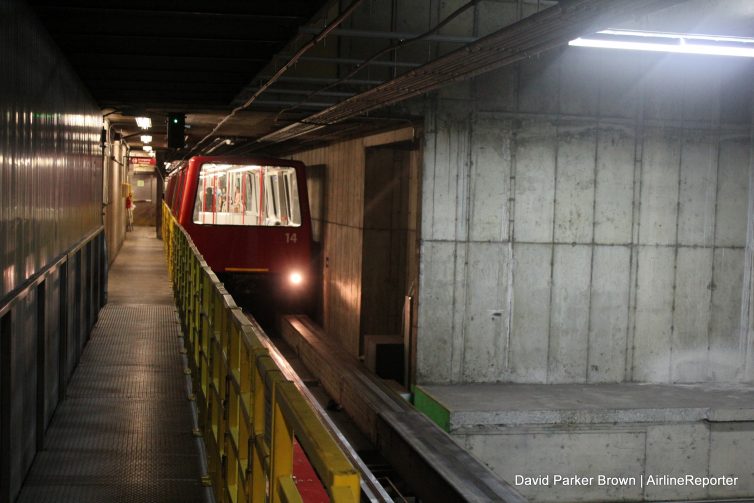
Below ground, one of the trains arrives at SEA
The Seattle-Tacoma International Airport (SEA) has been my home airport most of my life. I have seen the many changes over the years and I am proud to call it mine. Growing up, I lived in Oak Harbor, WA (about 90min northwest of Seattle) and I would often fly by myself from there to Reno, NV (where my dad lived). After I was 12, I didn’t need to be escorted and I would usually have a few hours of layover from my tiny home airport (ODW) to SEA. To burn time, I would often ride one of the satellite trains to the remote terminals and watch the airplanes come and go. Being a kid, sometimes I would just ride the train a few laps for fun.
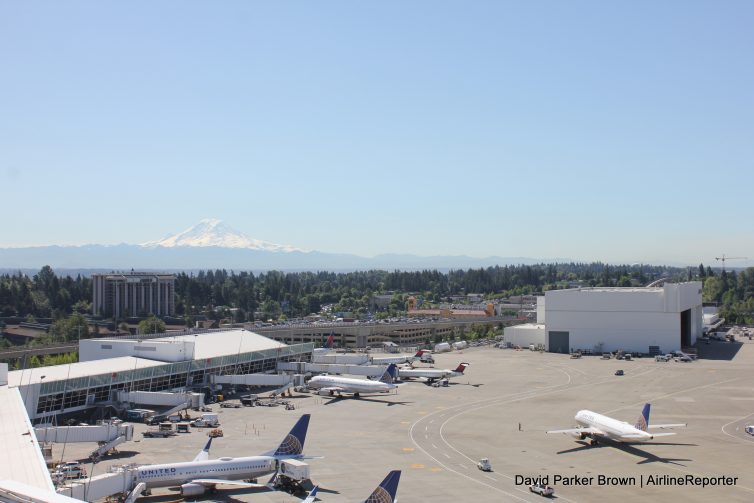
Above ground, Mount Rainier in the background at SEA
Throughout the years, I always wondered how they worked. I knew there wasn’t a person controlling them, but how were they programmed? How many cars were there? How did they get fixed? And how fast can they go? Luckily adult-me was in a position to find those answers, so I reached out to SEA to get a behind-the-scenes tour of their train operations. Once again, the adult-me was making the child-me jealous.
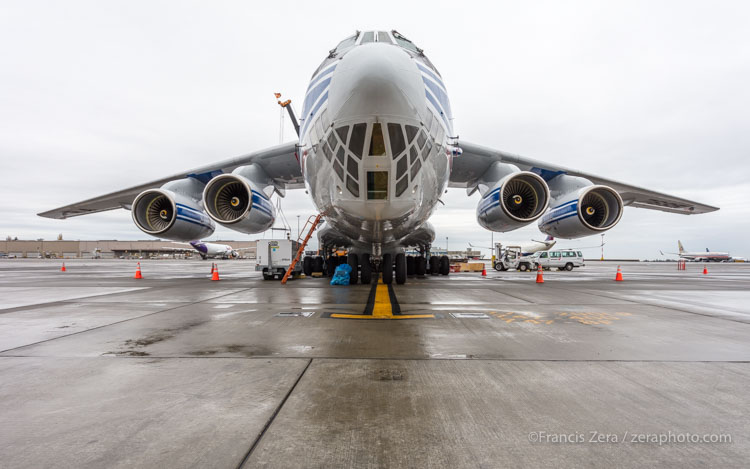
Nose-to-nose with a Volga-Dnepr Il-76. The windows at the forward navigator’s station are a distinctive feature of the aircraft.
With Boeing in our backyard, unusual aircraft are not an uncommon sight at any of metro Seattle’s airports. Antonov An-124s are regular visitors, usually delivering engines to Boeing’s Everett factory. I was recently at Seattle-Tacoma International Airport (SEA) when a rare bird was there to pick up some cargo.
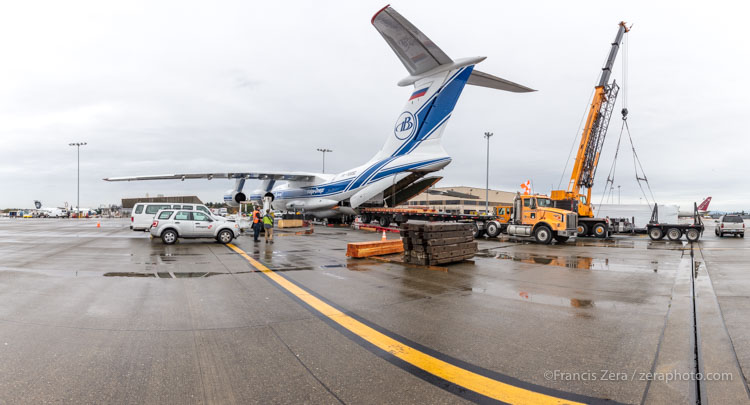
A crane and flatbed trailer were used to load large crates of specialized welding equipment that was to be delivered to Australia
This particular Ilyushin-76-TD-90-VD is owned by Russia-based Volga-Dnepr Airlines, which operates five of these aircraft. Part of the Volga-Dnepr group, the parent company also owns Airbridge Cargo Airlines and Atran Airlines.
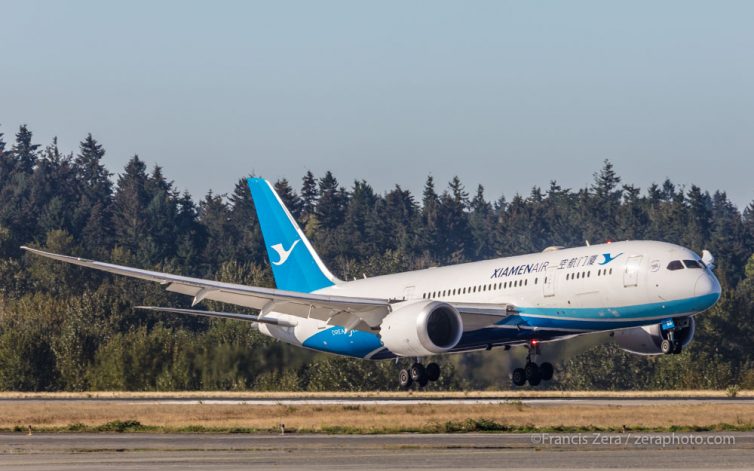
A Xiamen 787-8 glides in for a landing at Seattle-Tacoma International Airport on the airline’s inaugural U.S. revenue flight
Xiamen Airlines launched its Xiamen-Shenzhen-Seattle service on Sept. 26, creating both the first long-haul route from Xiamen to the United States and the first direct service to the States from the Chinese city of Shenzhen. We were there to welcome the inaugural flight.








